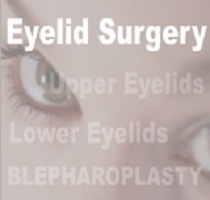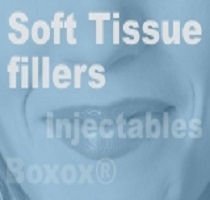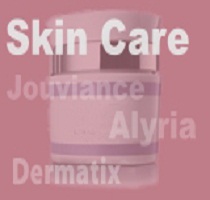WRAPPING THE BIOCERAMIC ORBITAL IMPLANT
(InSIGHT Newsletter Special Edition/ Update)
The Bioceramic orbital implant (Aluminum oxide – Al2O3, also called alumina) represents a new generation of porous orbital implant.1 It is a man-made material that has been in use for over 30 years in orthopedics (hip implants) and dentistry (dental implants) with great success. High purity aluminum oxide is considered the prototype of a truly bioinert material.2 It does not dissolve in body fluids and does not release soluable components. There is strong evidence that it is coated with protein molecules immediately after insertion into the body.2 As a result it escapes recognition as a foreign body and is immunologically camouflaged. Aluminum oxide has been shown to be more biocompatible than HA in cell culture studies.3,4 Human fibroblasts and osteoblasts seem to prefer aluminum oxide over hydroxyapatite to grow on aluminum oxide has a greater bio-inertness than all other implant materials available for joint replacement.5
Wrapping
To facilitate entry of a Bioceramic implant into the orbit, a wrap of some variety is recommended. Sclera is a popular wrap for porous orbital implants such as hydroxyapatite or aluminum oxide but may not be the most ideal or practical. Sclera has to be ordered through an eye bank and is not always readily available. At one time, sclera was free of charge but now may cost 300 US dollars or more. In addition, the use of donor material in this era of potentially fatal infectious disease (such as HIV) must always be considered and discussed in detail with any potential recipient. Although stringent criteria are used before accepting donor tissue (eye bank eyes) and although there have not been any case reports of diseases transmitted via sclera, many patients are uncomfortable accepting donor tissue. Furthermore, human immunodeficiency virus has recently been identified in preserved human sclera, by the polymerase chain reaction.6 Alternative wraps without risk of disease transmission include the patient’s own temporalis fascia or fascia lata (autologous tissue). Recently, other implant wraps have been introduced including processed human pericardium, processed human fascia lata, processed human sclera and bovine pericardium, etc.7 These wraps are also are very expensive (up to 600 US dollars). This author prefers polyglactin mesh (Vicryl ™ mesh – Ethicon) as a wrap since it eliminates the need for donor tissue (and the possible risk of disease transmission), eliminates a second surgical site, is readily available, simple to use, and inexpensive (approx. 25 US dollars per wrap).3,4,5 The Vicryl™ Mesh is absorbable and allows 360 degree entry of fibrovascular tissue as opposed to entry through scleral windows.
Unfortunately, there is a common perception that Vicryl™ mesh wrapping is associated with a high exposure rate.11 This is not correct. In a recent publication, 12 the rate of exposure in 120 synthetic hydroxyapatite cases utilizing Vicryl™ mesh as a wrap was 2.8% (3/107), a significantly lower rate than many other reports utilizing other wraps.12 If the surgeon is getting a high exposure rate he is simply not implanting the wrapped implant correctly.
The Wrap Technique 13
The Vicryl™ mesh is available in most hospitals as a 6 inch by 6 inch sheet (product code: VKMM, 6″ x 6″ knitted, undyed, Vicryl™ mesh).8 Recently the company has been providing the author with precut sheets of 2 1/2″ x 3″ that are a special order item at this time (product code: EC465).8 The Bioceramic implant (16,18 or 20 mm size) is placed on a 2 1/2 inch by 3 inch sheet of undyed, braided Vicryl™ mesh (a slightly larger piece is required for 22 mm spheres). The corners of the mesh are then held together. While one hand holds the corners of the mesh, the Bioceramic sphere is twisted so that the mesh twists upon itself posterior to the implant. A 4-0 Vicryl™ suture is then tied around the mesh to hold it. The excess Vicryl™ mesh is trimmed. Several additional holes are placed into the implant through the Vicryl™ mesh, with a 20 gauge needle as described by Ferrone & Dutton to enhance the vascularization.14 No windows are cut in the mesh. The Vicryl™ mesh encased implant is placed into a Carter-sphere-introducer-holder (Storz E5652) and inserted into the socket. This instrument facilitates entry of the hydroxyapatite implant into the socket.
The Vicryl™ mesh wrapped implant is not as slippery as a scleral wrapped implant. Consequently it tends to drag some of Tenon’s capsule and conjunctival posteriorly. To ensure the Vicryl™ mesh wrapped Bioceramic implant is properly seated, the surgeon should apply posterior pressure on the implant with a cotton-tipped applicator and, using Adson toothed forceps, simultaneously but carefully pull on conjunctiva and anterior tenons capsule for 360 degrees. By pushing on the implant with a cotton-tipped applicator and pulling on Tenon’s and conjunctiva, the surgeon is moving the implant slightly more posteriorly while simultaneously unrolling the turned in Tenon’s and conjunctival edges. When placed into the orbit properly, the Vicryl™ mesh wrapped implant should sit in position with no tendency to spontaneously extrude. It is not placed deep within the orbit as suggested in a recent article.11 The vast majority of it still remains within Tenon’s space. The rectus muscles are then attached to the Vicryl™ mesh wrapped Bioceramic implant approximately 5mm more anterior than their original position. They are not imbricated with one another over the center of the implant. A meticulous closure of the tenons capsule and conjunctiva in separate layers is then carried out. Tenon’s is closed until 4-0 Vicryl™ suture (8 to 10 sutures) while conjunctiva is closed with 6-0 plain. A conformer is then inserted into the conjunctival fornices followed by an eye patch.
References
1. Jordan DR, Mawn LA, Brownstein S, McEachren TM, Gilberg SM, Hill VE, Grahovac SZ, Adenis JP. The Bioceramic orbital implant: a new generation of porous implants. Ophthal Plast Reconstr Surg 2000;16:5:347-355.
2. Heimke G, Griss P, Jentschura G, Werner E. Bioinert and bioactive ceramics in orthopedic surgery. In: Hastings G, Williams D, eds., Mechanical Properties of Biomaterials. John Wiley & Sons, Toronto, 1980, pgs. 207-215.
3. Christel P. Biocompatibility of surgical-grade dense polycrystalline alumina. Clin Orthop 1992;282:10-8.
4. Mawn LA, Jordan DR, Ahmad I, Gilberg S. Effects of orbital biomaterials on human fibroblasts. Can J Ophthalmology – in press.
5. Labat B, Chamson A, Frey J. Effects of d-alumina and hydroxyapatite coatings on the growth and metabolism of human fibroblasts. J Biomed Mater Res 1995;29:1397-401.
6. Sieff SR, Chang Jr. JS, Hunt MH, Khayam-Boshi H. Polymerase chain reaction identification of human deficiency virus-1 in preserved human sclera. Am J Ophthalmol 1994;118:528-36.
7. Klapper SR, Jordan DR, Punja K, Brownstein S, Gilberg SM, Mawn LA, Grahovac SZ. Hydroxyapatite implant wrapping materials: analysis of fibrovascular ingrowth in an animal model. Ophthal Plasr Reconstr Surg 2000;16:4:278-285.
8. In United States – Ethicon Inc. In Canada – Ethicon, A Division of Johnson’s & Johnson’s. 1-800-268-5577.
9. Jordan DR, Allen LH, Ells A, Gilberg S, Brownstein S, Munro SM, Grahovac S, Raymond F. The use of Vicryl Mesh (polygalactin 910) for implantation of hydroxyapatite orbital implants. Ophthal Plast Reconst Surg 1995:11:295-99.
10. Jordan DR, Ells A, Brownstein S, Munro SM, Grahovac S, Raymond F, Gilberg S, Allen LH. Vicryl Mesh wrap for the implantation of hydroxyapatite orbital implants: an animal model. Can J Ophthalmol 1995:30:5:241-46.
11. Custer PL. Enucleation, Past, Present and Future. Ophthal Plast Reconstr Surg 2000;16:5:316-321.
12. Jordan DR, Bawazeer A. Experience with 120 synthetic hydroxyapatite implants. Ophthal Plast Reconstr Surg 20001; May Issue.
13. Jordan DR, Klapper SR. Wrapping hydroxyapatite implants. Ophthlamic Surg Lasers 1999;30:403-407.
14. Ferrone PJ, Dutton JJ. Rate of vascularization of corraline hydroxyapatite ocular implants. Ophthalmology 1992:99:376-7.
See also Bioceramic Orbital Implant and Pegging the Bioceramic Orbital Implant.
If you have any questions regarding the topics of this newsletter, or requests for future topics of InSight, please contact Dr. David R. Jordan office by telephone at (613) 563-3800.







